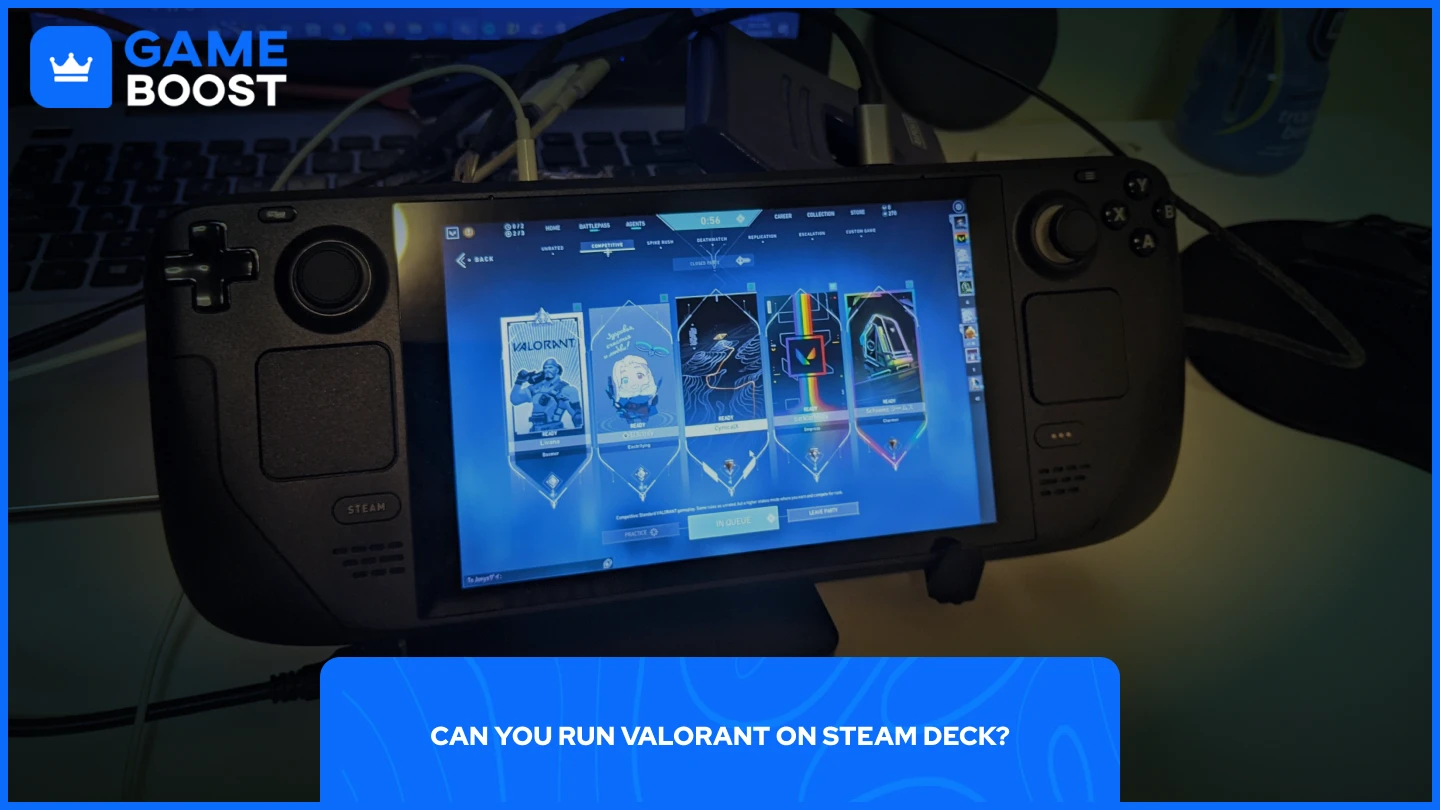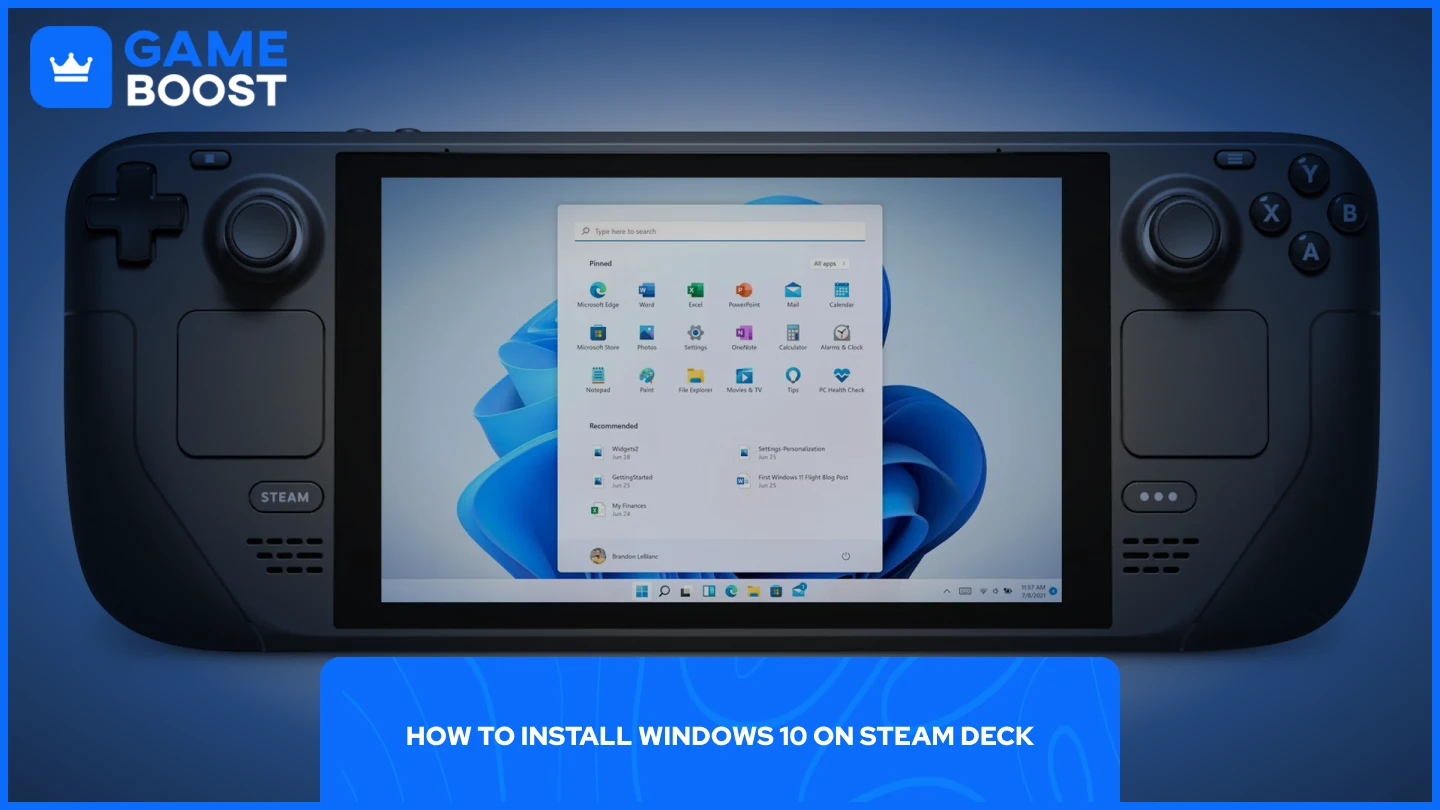

Can You Play Valorant on Steam Deck? (Answered)

The Steam Deck is a handheld PC by Valve that runs SteamOS, which is based on Linux. Valorant uses Riot's anti-cheat system called Vanguard, which is deeply tied to Windows and certain hardware security features. Under SteamOS, Vanguard is incompatible. Vanguard hasn't been built for Linux environments, and Proton doesn't provide the kind of access Vanguard needs. So Valorant will refuse to run on the Deck in its default configuration.
Fortunately, there are other alternatives that may let you play Valorant on your Steam Deck. In this article, we'll explore whether you can play Valorant on your Steam Deck and highlight the steps needed to make it work.
Also Read: Valorant Economy Guide: Everything to Know
Can You Run Valorant on Steam Deck?

Credit: u/-CynicalX- on Reddit
Yes, you can run Valorant on Steam Deck, but it requires installing Windows 10. The process isn't straightforward since Valorant's Vanguard anti-cheat system doesn't work with Linux-based operating systems like SteamOS. This means you'll need to replace SteamOS with Windows or set up a dual-boot system. Once Windows is installed, Valorant runs just like it would on any other PC.
The installation process takes some technical know-how, but it's completely doable. You'll need a USB drive, a Windows license, and about an hour to complete the setup. After that, you can download Valorant through the Riot Games client and play normally.
Also Read: How to Whisper in Valorant: Step-by-Step Guide
How to Install Windows 10 on Steam Deck

Installing Windows 10 on your Steam Deck takes about an hour and requires a few tools. You'll need a USB drive with at least 32GB of space, a Windows 10 license, and access to another Windows PC to create the installation media. This process will erase SteamOS and all your data, so back up anything important before starting.
1. Download Windows 10 ISO
Go to Microsoft's official website and download the Windows 10 ISO file. Use the Media Creation Tool and select "Create installation media" to get the ISO file saved to your computer.
2. Download Required Tools
Download and install Rufus on your Windows PC. This free tool will create a bootable USB drive from your Windows ISO file. Download the Steam Deck Windows drivers from Valve's official support page and extract them to a separate USB drive or folder.
3. Create Bootable USB Drive
Connect your USB drive to your PC and open Rufus. Select your USB drive under "Device," then click "SELECT" and choose your Windows 10 ISO file. Under "Image Option," pick "Standard Windows Installation" and click "START." The process takes about 10-15 minutes, depending on your USB drive speed.
4. Access Steam Deck Boot Manager
Turn off your Steam Deck completely. Hold down the Volume Down button and press the Power button until you hear the startup chime. This opens the boot manager, where you can select different boot devices.
Also Read: How Many Skins Are in Valorant: Complete Guide
5. Start Windows Installation
Connect your USB drive to the Steam Deck using a USB-C hub. Select your USB drive from the boot menu to start the Windows installation. The screen will display in portrait mode initially, but you can rotate the Steam Deck or connect an external keyboard and mouse through your USB hub.
6. Complete Windows Setup
Follow the Windows setup process by selecting your language, accepting the license terms, and choosing "Custom: Install Windows only" when prompted. When you reach the disk selection screen, delete all existing partitions on the Steam Deck's internal storage and create a new one for Windows.
Windows will install and restart several times. Once you reach the desktop, go to Settings > System > Display and change the orientation from portrait to landscape to fix the screen rotation.
7. Install Steam Deck Drivers
Connect your second USB drive with the Steam Deck drivers and install them one by one. These include AMD GPU drivers, Wi-Fi, Bluetooth, and audio drivers. Some features, like the built-in speakers, might not work perfectly, but you can get audio through Bluetooth or USB-C headphones. After installing all drivers, restart your Steam Deck. Windows 10 should now run smoothly on your device.
8. Install Valorant
Open your web browser and go to Valorant website. Click the "Download" button to get the Riot Games client installer. Create a Riot Games account if you don't have one, or log in with your existing account.
Run the Riot Games installer and follow the setup prompts. The client will download and install automatically to your C drive, though you can change the location in advanced settings. Launch the Riot Games client and download Valorant through it. The game is about 29GB in size, so make sure you have enough free space.
Once the download completes, you can launch Valorant and start playing. The Steam Deck can run Valorant at around 60 fps with settings on low, and you may want to use reWASD to properly map the controls to the Steam Deck's buttons and joysticks.
Final Words
Playing Valorant on Steam Deck requires installing Windows 10, which takes about an hour and some technical setup. The game runs at decent frame rates once installed, but you'll lose SteamOS functionality, and some hardware features won't work perfectly. This method works for casual play, though competitive gaming feels different without traditional mouse and keyboard controls.
“ GameBoost - The All-In-One Gaming Services Platform with a mission to truly change the life of every day gamers. Whether you're looking for Currencies, Items, High-Quality Accounts or Boosting, we've got you covered! ”





